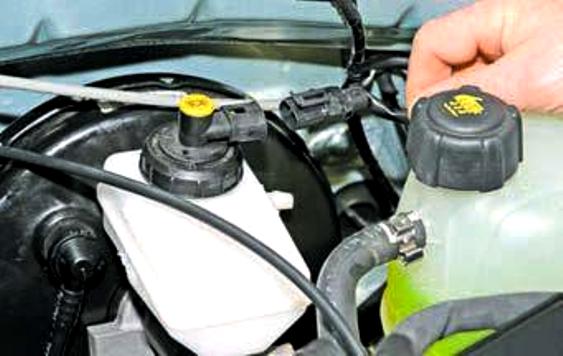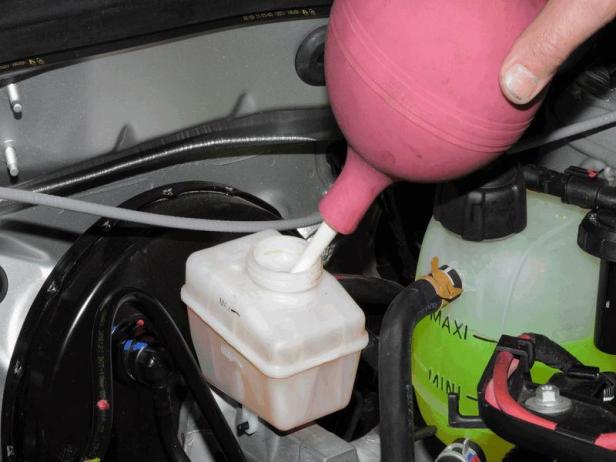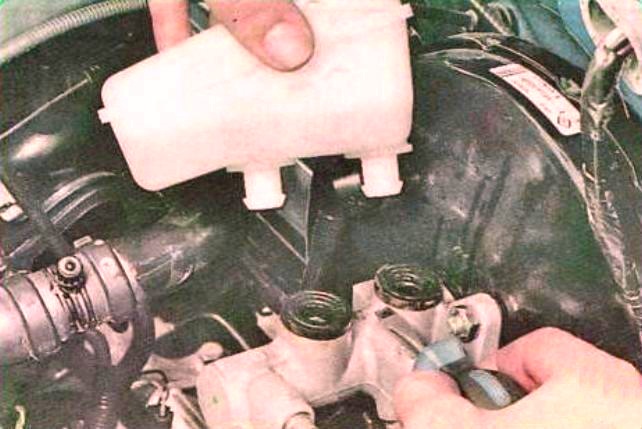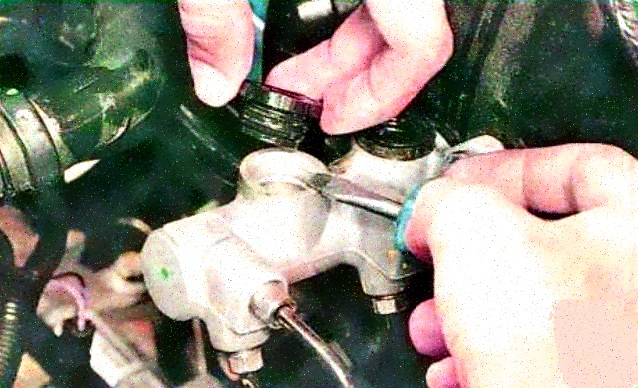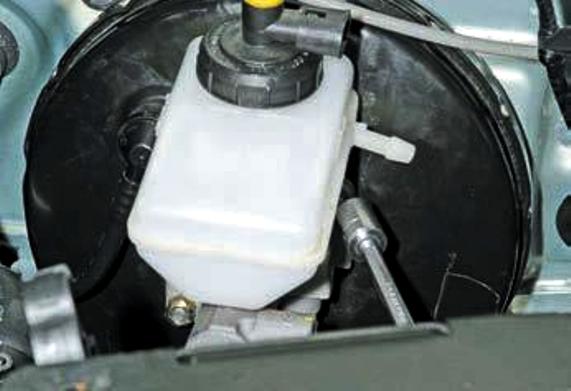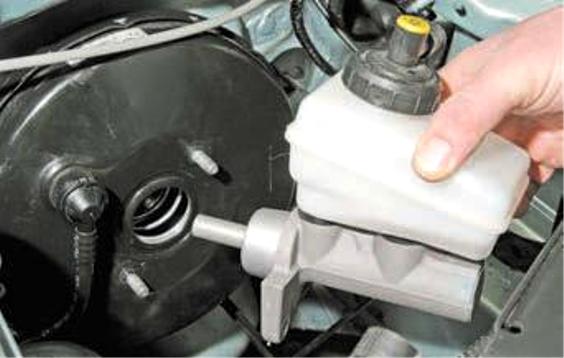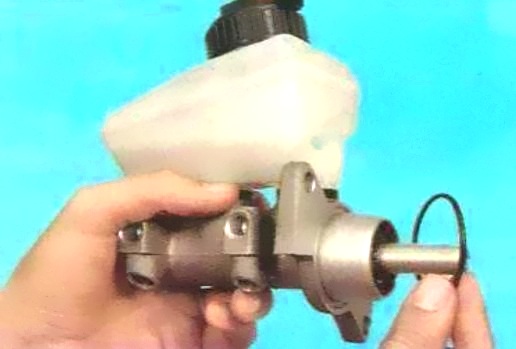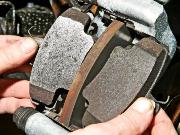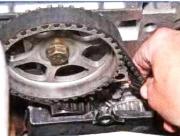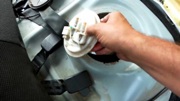As practice shows, in many cases, rebuilding a cylinder in a garage does not lead to the desired result
Therefore, in the event of a malfunction, we recommend replacing the brake master cylinder assembly.
Replacing the master cylinder reservoir
You will need a screwdriver.
Disconnect the wire from the negative terminal of the battery.
Disconnect the harness connector from the brake fluid level sensor.
Unscrew the cap of the reservoir and pump out the brake fluid from it, for example, with a rubber bulb or a medical syringe.
Prying off with a screwdriver, remove the tank, removing its nozzles from the connecting sleeves
Remove the connecting sleeves of the cylinder body bores.
Inspect the bushings and if the rubber shows signs of wear, replace them.
Install the parts in the reverse order of removal.
Moisten the connecting sleeves with fresh brake fluid to facilitate reservoir installation.
Fill in the brake fluid and bleed the air from the hydraulic drive (see "Replacing Renault Logan brake fluid")
Replacing the brake master cylinder
You will need: a special key "11" for brake pipes, a key "13".
Disconnect the wire from the negative terminal of the battery.
Unscrew the cap of the reservoir of the main brake cylinder and pump out the brake fluid from the reservoir, for example, with a rubber bulb.
Remove the nuts securing the four pipelines to the cylinder and move the pipelines to the side.
Close off the lines by any means possible (for example, by putting protective caps on the ends of the valves to release air) to prevent leakage of brake fluid.
Unscrew the two nuts securing the brake master cylinder to the vacuum booster and remove the brake master cylinder.
Please note that the master cylinder flange is sealed with a rubber ring.
Replace a severely reduced, hardened or torn ring
Install the parts in the reverse order of removal, fill in the brake fluid and bleed the air from the system (see "Replacing Renault Logan brake fluid")







